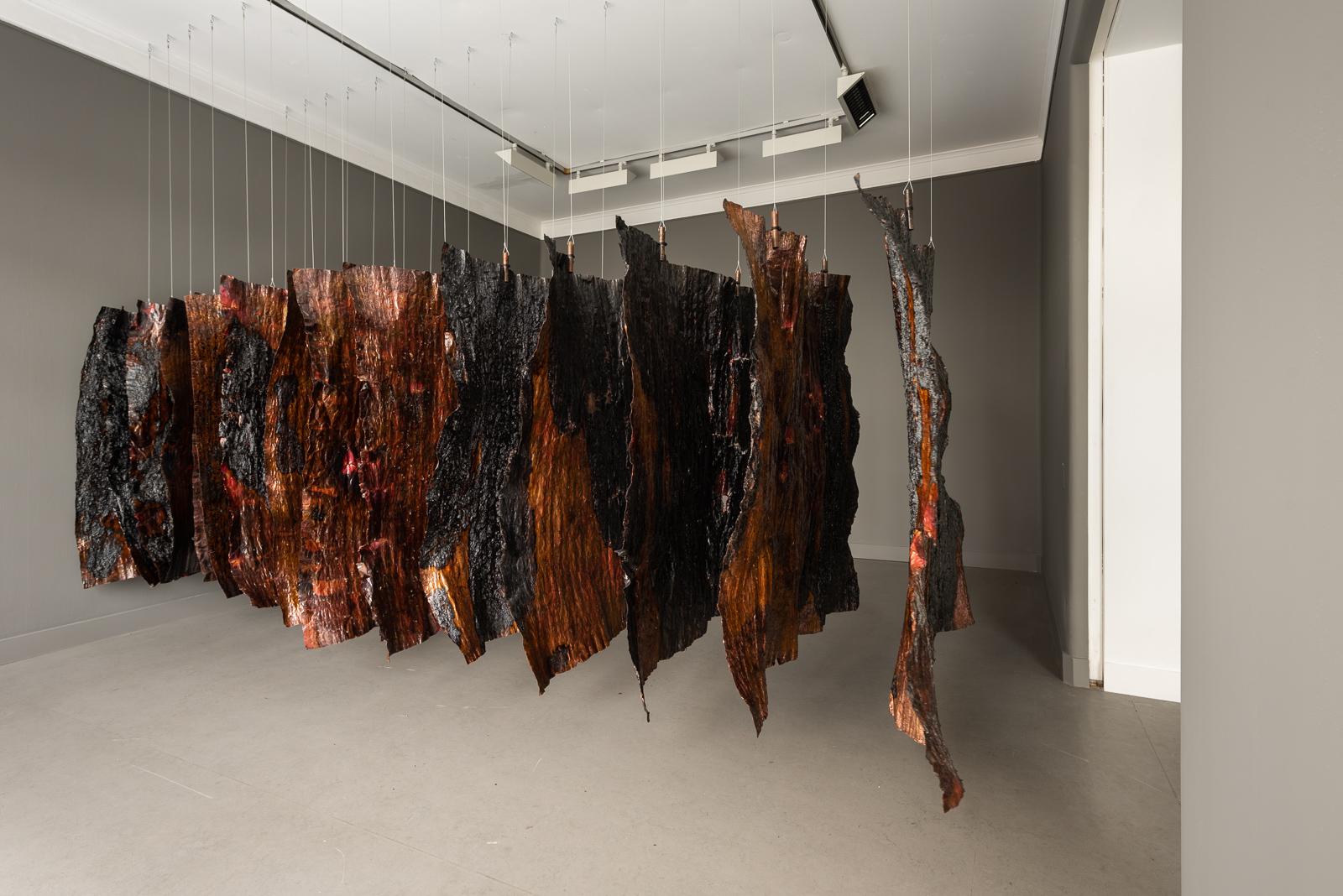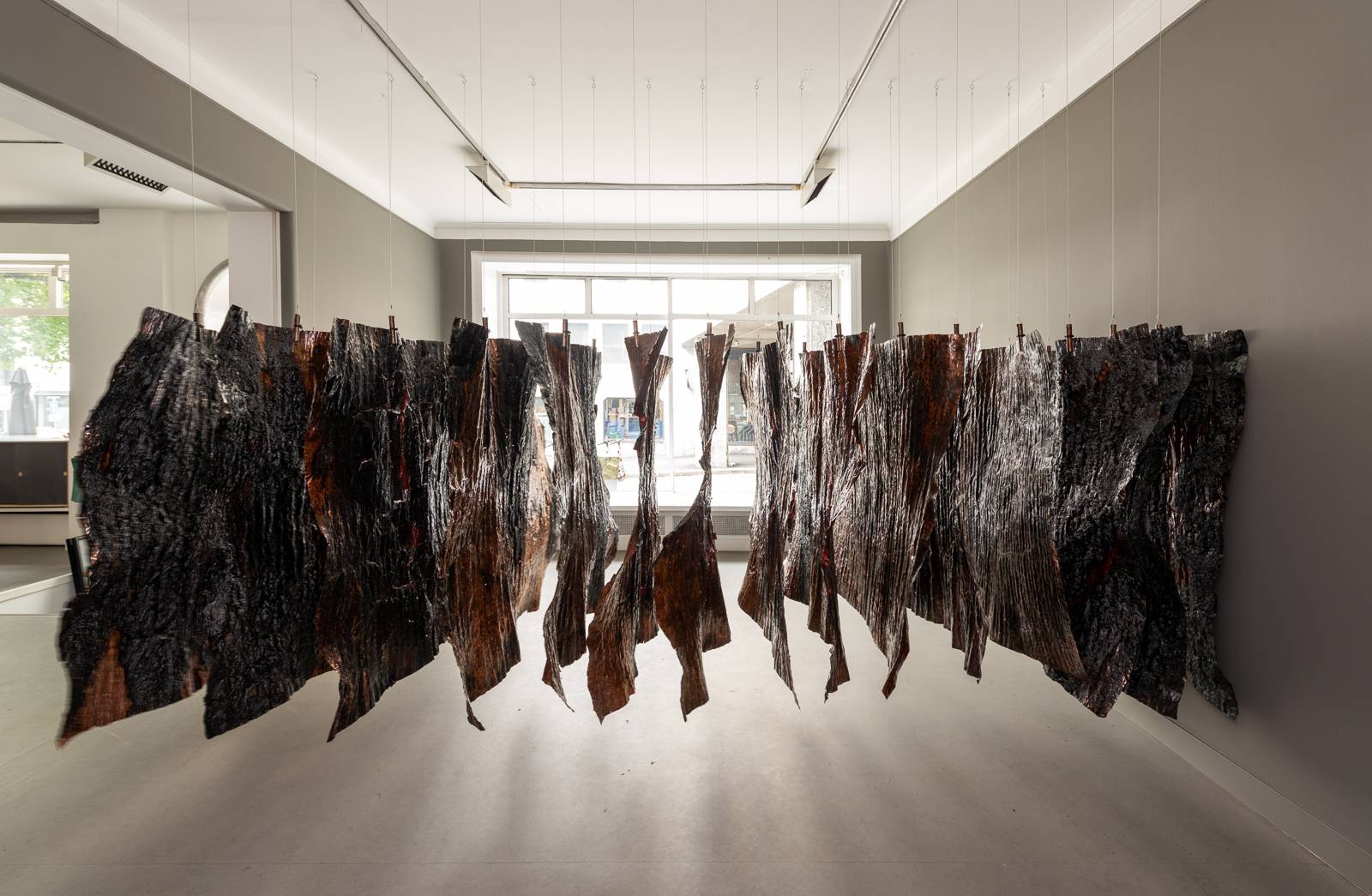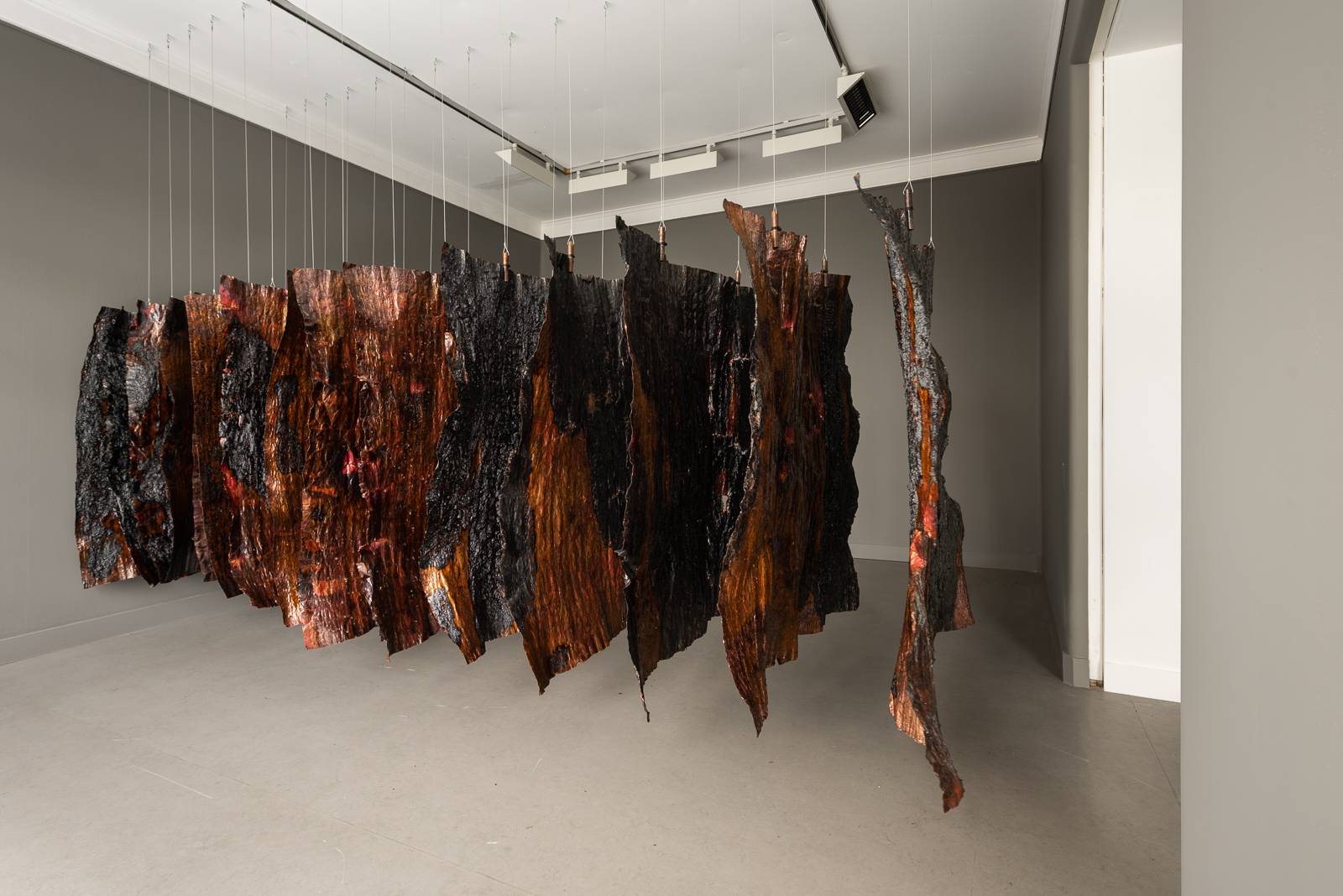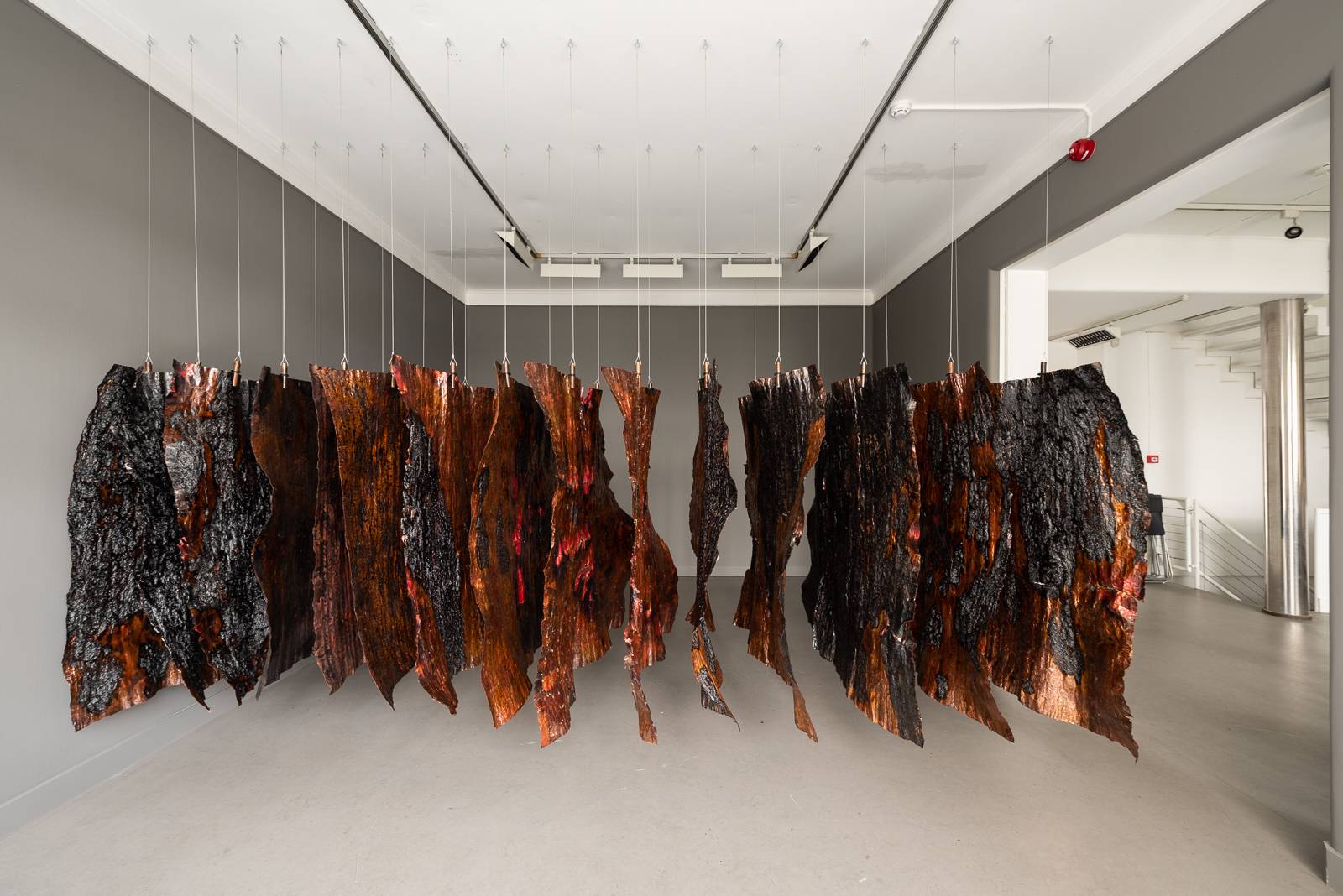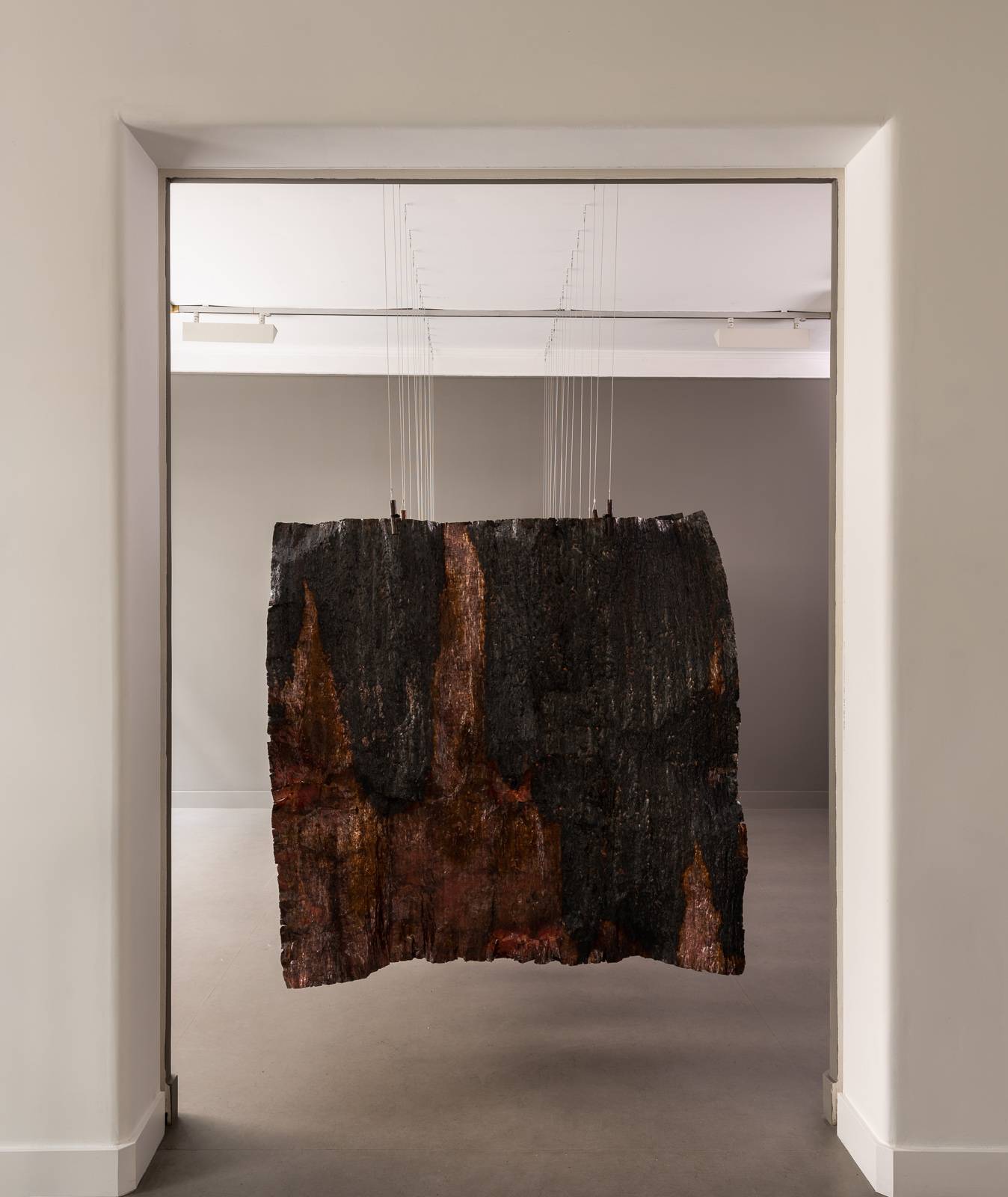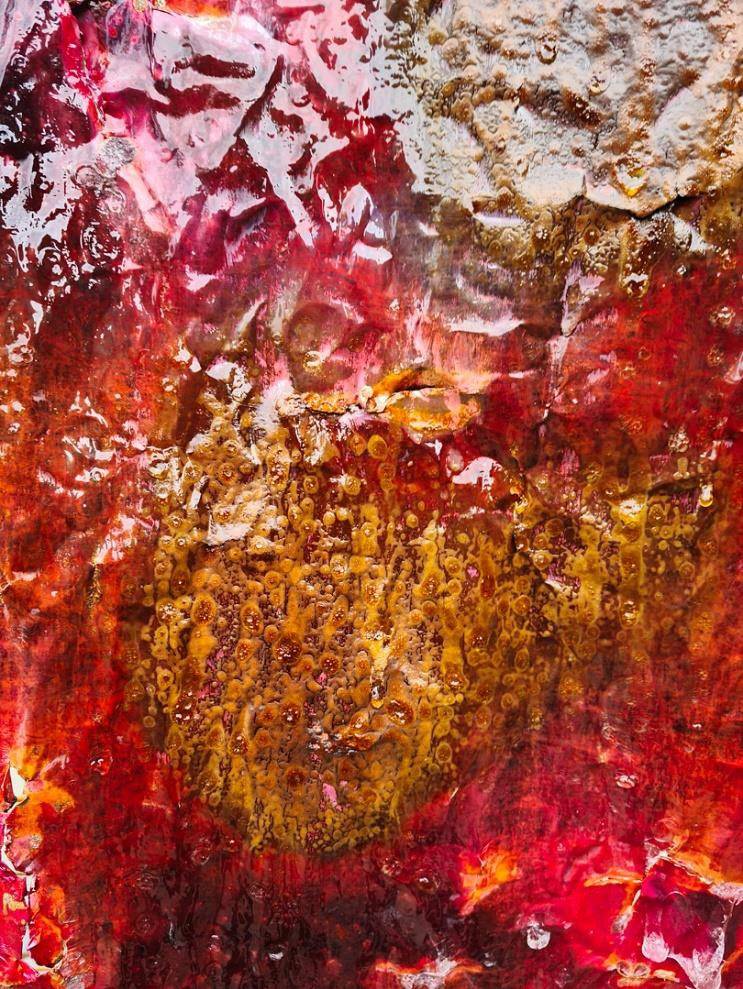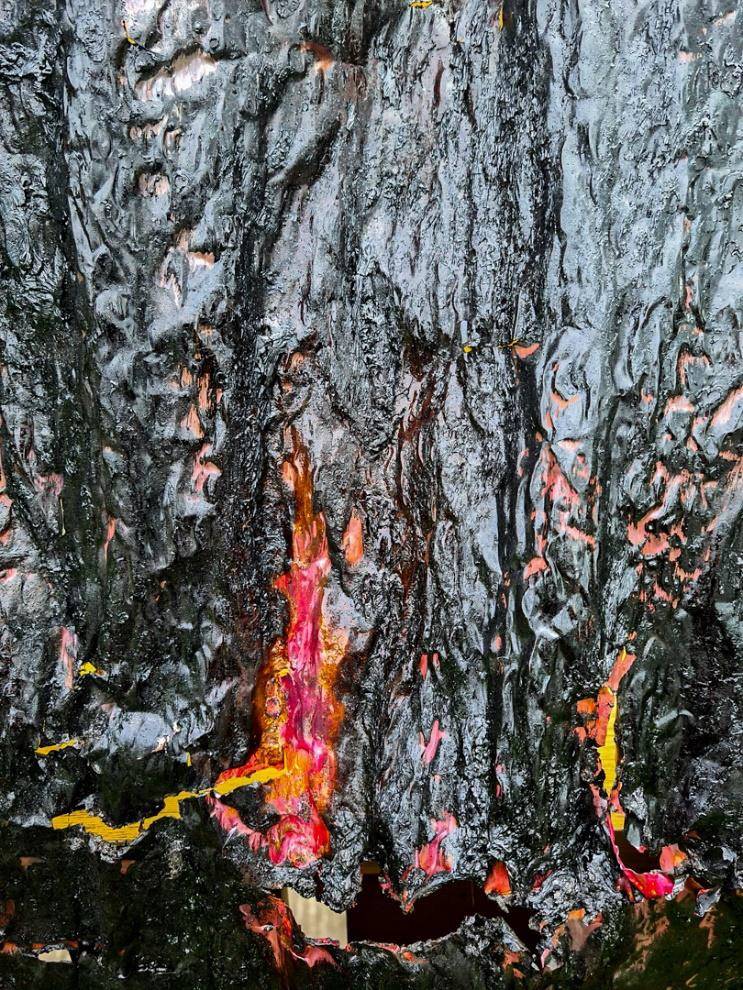Sofia Karyofilis
Barre
The Window Hall
10th of August – 10th of September 2023
The installation Barre in the Window Hall in Kunstnerforbundet is one of metal artist Sofia Karyofilis's first comprehensive room installations. Karyofilis' artistic practice has been in continuous development from the start from smaller objects and sculpture to installation work. Where the experience of Karyofilis' previous art objects was as something seen from the outside, we are now involved in the interaction between architecture and work with both senses, body and emotions. Her solid craftsmanship, based on the corpus tradition (cold forging of metal sheets), has been a premise for the experimentation. She sculpts the metal freely and is constantly expanding her vocabulary. The driving force has been a curiosity about the possibilities of materials, shapes and, gradually, space and architecture. The need to discuss new issues gradually required a larger space in which to unfold.
The installation manifests Karyofilis' interest in man-made boundaries, both physical and social. The work plays on different sides of this theme: barriers both in a concrete and a mental sense. The body's movement in the room is adjusted according to the row of copper flakes that more or less barricade the doorway and continue inwards, almost like a partition. There is something fragile and vulnerable about the work, but also uncomfortable. At first glance, the metal may resemble something machine-made, like rusted corrugated iron sheets. At the same time, the surface gives associations to burnt skin, open wounds, something inflamed, something running. Karyofilis is, as always, at a tipping point between permanency and disintegration.
The traces of the artistic process are tangible. Objects that are not machine-made can never become completely identical - unlike an industrially produced bar of metal. The repetition of the copper flakes and the surface treatment emphasize their individuality. They are covered in glucose syrup that is burned with a flamethrower. This technique involves coincidences, because the glucose reacts differently depending on the degree to which it is exposed to heat and occasionally catches fire. The surfaces bear witness to the artist's physical work and the uncontrollable and random nature of the process. The sum of two-dimensionality, the processing of the surface and the emotional expression gives associations to abstract expressionism. It provides an entrance to reflect on common human experiences that leave a mark.
Written by art historian Janeke Meyer Utne.
Sofia Karyofilis (b. 1978, Oslo) holds a master's degree from the Oslo Academy of the Arts. She has, among other places, exhibited at Oppland Kunstsenter, Galleri Format, KRAFT, Hå Gamle Prestegård and has repeatedly participated in The annual exhibition for Norwegian arts and crafts. In 2018, she was invited to the Benaki Museum in connection with Athens Jewelry Week. Her works have been acquired for the collections of The National Museum, KODE and National Museum of Decorative Arts and Design (Nordenfjeldske Kunstindustrimuseum).
The exhibition has received funding from Arts and Culture Norway (Kulturrådet) and The art centers in Norway (Kunstsentrene i Norge).
